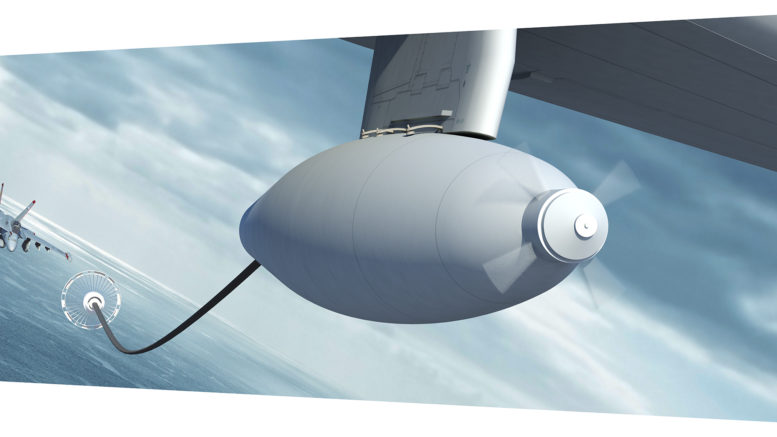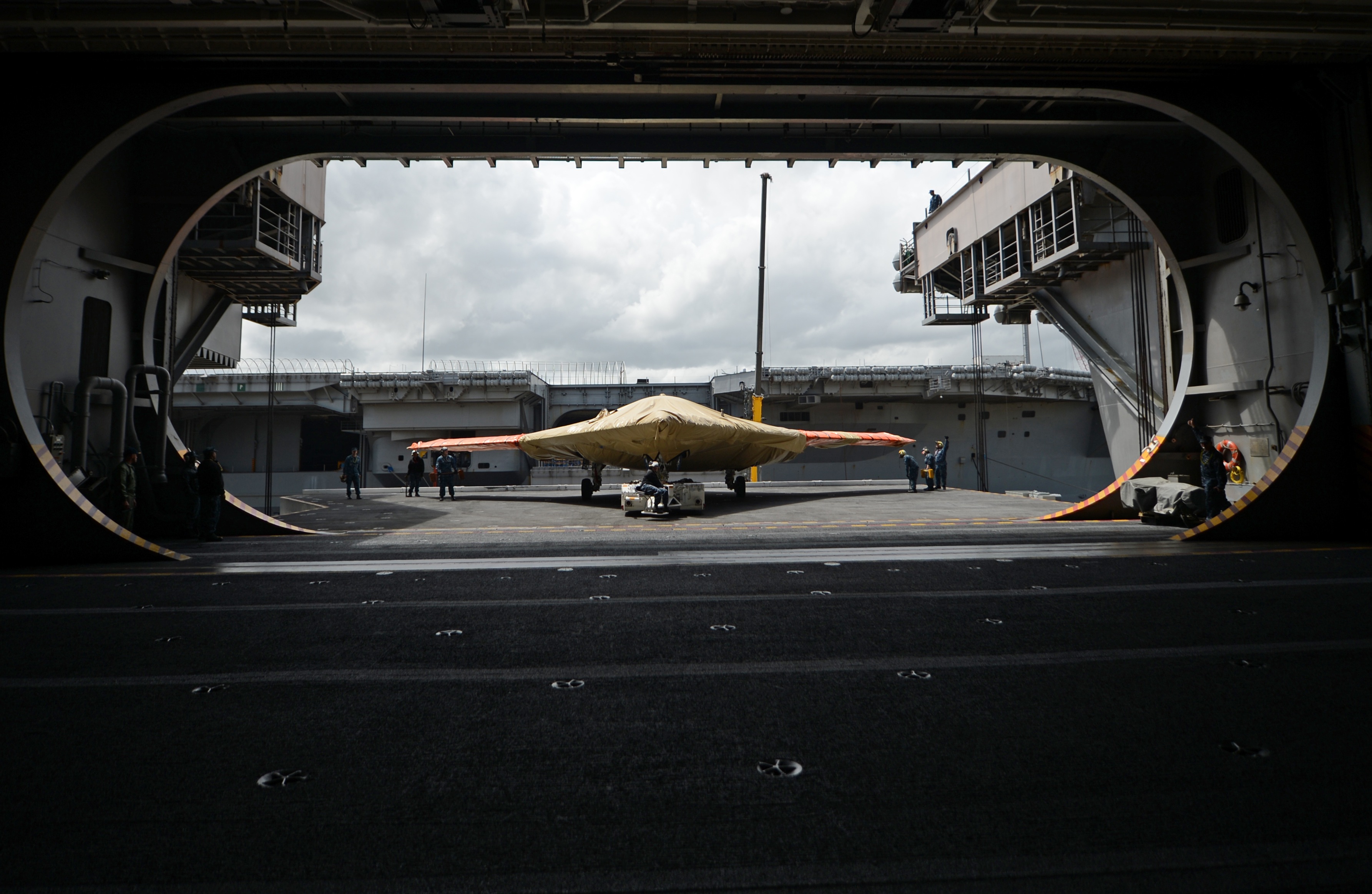
The Navy issued its latest draft request for proposals for what will be the service’s first operational carrier-based unmanned aerial vehicle, U.S. Navy officials confirmed to USNI News on Thursday.
The Wednesday draft RFP for the MQ-25A Stingray unmanned aerial refueling tanker will be the last refinement of the program requirements before the final RFP goes out to four industry competitors in the fall, Rear Adm. Mark Darrah, Program Executive Officer Unmanned Aviation and Strike Weapons, told USNI News on Thursday.
“What we’re looking for is.. our big next step in getting unmanned [aircraft] in the carrier air wing environment. The intent of this system is to extend the striking capability of the carrier air wing through organic tanking capability,” Darrah said.
“We want to make better use of our combat strike fighters and extend the range of the carrier air wing, and that’s what this system is intended to do. That’s its primary mission.”
The draft RFP for a planned engineering and manufacturing development (EMD) contract award in 2018 was issued to directly to the four competitors – Northrop Grumman, Lockheed Martin, Boeing and General Atomics. The quartet will compete under new acquisition rules that allow the service to provide less specific guidelines for the Stingray as a rapid prototyping effort.
For example, the MQ-25A effort only has two key performance parameters (KPP) for industry to adhere to in their crafting of the airframe for the MQ-25A.
“In the NDAA 2017 language, the services were given the authority to designate one program as a pilot to reduce the number of key performance parameters that would be in our requirements documents,” Darrah said.
“We have requested from OSD that permission in accordance with that language, and this program was selected, and we have two KPPs.”
According to MQ-25A program manager Capt. Beau Duarte those are:
“Carrier suitability. The system needs to be able to operate off of the aircraft carrier and integrate with all of the subsystems of the carrier. That’s catapults, that’s existing launch and recovery equipment,” he told USNI News on Thursday.
“Mission tanking. Sea-based tanker is the second KPP. It needs to be able to deliver a robust fuel offload at range to support an extension of the air wing and add flexibility of what’s available from a mission tanking perspective. There are a number of key system attributes or other requirements lower than that that are subsequent to [those] and are of lower importance and that will allow us to focus on those two key areas on tanking and carrier suitability and let those be the primary design drivers. “
Both Duarte and Darrah were reluctant to outline more specifics on the effort other than to say the bids have to use existing aerial refueling systems already in the fleet.
“We are saying that you do have to use the existing aerial refueling store that F/A-18s [and] S-3s have used – and that’s externally carried – and that’s to reduce development, cost and timeline and risk,” Duarte said.
“But how you configure the air vehicle to deliver that fuel is up to industry.”

Both Boeing and Lockheed Martin have published vague artist’s concepts of their bids showing an existing Navy buddy tank hanging from a wing like the current Super Hornets.
Darrah and Duarte didn’t talk cost estimates or ranges they’ve provided to industry.
“We have history. We’ve seen how [past] programs work,” Darrah said.
“When we put a number out there, eerily they tend to get to that number and go backwards, go backwards in their development so they hit that number. We are taking a different approach this time. We’re not going to define the that number at this point and direct them to provide us with their input so that we can adequately and accurately determine what they truly can do.”
While the air segment is the most visible part of the Stingray program, the physical UAV is only a third of the effort, which also includes the Navy-developed control system and data links to control the aircraft. While previous iterations of what is now Stingray have been based on developing new technologies, Darrah stressed the new airframe effort is less about developing new tech and more about mixing and matching existing systems to make unmanned tanking a reality on the carrier.
“The program has been structured so there isn’t any new development. There’s no new science here. This is an air system that will deliver an aeromechanical machine that can do the requirements,” he said.
“The government will be the lead systems integrator for those 70-plus programs of record which we feel gives us the capability to incorporate open architecture, flexibility for change in the future, and we’re driving the contractor to plug in into that architecture, that existing Navy architecture in the carrier environment.”

As to when the MQ-25A will be operational, Darrah said the program was aiming for the 2020s. However, officials have said that Chief of Naval Operations Adm. John Richardson is pushing to have a real-world unmanned aircraft fly off a carrier as early as 2019.
The imperative is to alleviate the strain on the strike fighter fleet currently tasked with refueling the carrier air wing. The Navy estimates 20 to 30 percent of Super Hornet flight hours are used for tanking.
To support that effort, the Office of the Secretary of Defense directed the service to reshape the craft in early 2016 from an off-cycle intelligence, surveillance and reconnaissance platform with a light strike capability to into a refueling tanker.





